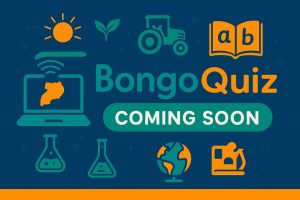We discuss modern-day slavery, including its causes, consequences, and the challenges faced in combating it. It highlights the need for a comprehensive approach that addresses root causes, strengthens legal frameworks, and provides support to victims.
Contents
Introduction
Modern-day slavery, encompassing forced labor, human trafficking, and other forms of exploitation, remains a pervasive and deeply concerning human rights crisis. This scourge affects millions of individuals worldwide, trapping them in situations of exploitation and depriving them of their freedom, dignity, and basic human rights. This article will examine the causes of modern-day slavery, its devastating consequences, and the critical steps needed to eradicate this global injustice.
What is MODERN DAY SLAVERY
Modern-day slavery, often referred to as contemporary slavery or human trafficking, is a global human rights crisis that persists in various forms, affecting millions of individuals worldwide. It encompasses practices such as forced labor, debt bondage, child labor, human trafficking, and sexual exploitation.
These victims are often lured with false promises of better opportunities, only to find themselves trapped in situations of exploitation. Vulnerable populations, including migrants, women, children, and those living in poverty, are particularly at risk. Modern slavery is driven by factors like economic inequality, conflict, and the demand for cheap labor and commercial sexual services.
Efforts to combat modern slavery include legal frameworks, international conventions, and the work of NGOs and governments. However, it remains a pervasive issue, as criminals adapt to evade law enforcement. To address this crisis effectively, it’s crucial to raise awareness, strengthen legislation, support victims, and tackle the root causes, including poverty and social inequality. Eradicating modern-day slavery is a moral imperative, as it deprives individuals of their freedom, dignity, and basic human rights, perpetuating a cycle of suffering that must be broken.
Causes of modern day slavery
Various forms of human trafficking, forced labor, and exploitation persist in different parts of the world, including East Africa. The emergence of these practices in East Africa today can be attributed to several interconnected factors:
1. Economic Vulnerability: Poverty and lack of economic opportunities make individuals and communities vulnerable to exploitation. High levels of unemployment and economic inequality contribute to the emergence of modern-day slavery.
2. Conflict and Displacement: Ongoing conflicts and displacement of people, such as in regions like South Sudan and Somalia, create conditions where people can be easily exploited and trafficked.
3. Lack of Law Enforcement: Weak law enforcement, corruption, and a lack of resources can create an environment where human traffickers and exploiters can operate with relative impunity.
4. Demand for Cheap Labor: The demand for cheap labor, including domestic work, agriculture, and construction, creates opportunities for traffickers to exploit vulnerable workers.
5. Human Trafficking Networks: The existence of well-organized human trafficking networks that can transport individuals across borders contributes to the persistence of these practices.
6. Gender-Based Violence: Gender-based violence, including forced marriage and sexual exploitation, is a significant factor in the emergence of modern slavery, particularly affecting women and children.
7. Lack of Education and Awareness: Limited access to education and awareness about the risks of trafficking can make people more susceptible to exploitation.
8. Cultural and Traditional Practices: In some cases, cultural practices, such as child marriage or bonded labor, perpetuate exploitation.
9. Migration: Irregular and unsafe migration, often driven by the desire for better economic prospects, can expose individuals to trafficking and exploitation.
10. Weak Social Services: A lack of social services to support victims of trafficking and forced labor hinders efforts to combat these practices.
Efforts to address modern slavery in East Africa and globally include legal frameworks, international conventions, and the work of governments, NGOs, and civil society organizations. These efforts aim to raise awareness, strengthen legislation, provide support for victims, and tackle the root causes that make individuals vulnerable to exploitation. It’s important to note that the situation may have evolved since my last update, so the latest information and data on this issue should be sought from authoritative sources.
Challenges brought by modern day slavery to the people of east Africa
Modern-day slavery, including human trafficking, forced labor, and other forms of exploitation, presents numerous challenges to the people of East Africa. These challenges have significant social, economic, and human rights implications. Some of the key challenges faced by individuals and communities in East Africa in the context of modern-day slavery are:
1. Economic Exploitation: Modern slavery often involves the exploitation of vulnerable individuals, particularly those in poverty, who are forced to work in harsh conditions for little or no pay. This perpetuates a cycle of poverty.
2. Violence and Coercion: Many victims of modern slavery face physical and psychological violence, coercion, and threats, which can lead to severe trauma and long-term psychological harm.
3. Loss of Freedom: Victims of slavery lose their freedom and autonomy. They are often confined to work locations or subjected to restrictions on their movement.
4. Health Risks: Working in exploitative conditions, including child labor and forced labor in agriculture, mining, and domestic work, exposes individuals to health risks and inadequate access to healthcare.
5. Child Exploitation: Children are particularly vulnerable to modern slavery, and their education and overall development can be severely impacted.
6. Human Trafficking: East Africa is a source, transit, and destination region for human trafficking. Individuals are trafficked both within and outside the region, often for sexual exploitation or forced labor.
7. Gender-Based Violence: Modern slavery often involves gender-based violence, including sexual exploitation and forced marriage, disproportionately affecting women and girls.
8. Lack of Legal Protection: Weak legal frameworks, corruption, and inadequate law enforcement can hinder the protection of victims and the prosecution of perpetrators.
9. Stigmatization: Survivors of modern slavery may face social stigma, making it difficult for them to reintegrate into their communities and access support services.
10. Economic Impact: Modern slavery can undermine economic development, as it diverts resources away from legitimate economic activities and prevents individuals from contributing positively to their economies.
11. Social Disruption: Exploitation can lead to social disruption and the disintegration of families and communities, as victims are often separated from their loved ones.
12. Lack of Awareness: Limited awareness and understanding of the issue of modern slavery may prevent individuals from recognizing the signs of exploitation and seeking help.
Efforts to address these challenges in East Africa include strengthening legal frameworks, improving law enforcement, providing support services for survivors, and raising awareness about the risks and consequences of modern slavery. These efforts are essential for combatting these human rights abuses and protecting vulnerable individuals and communities.
The possible approaches you can use to end modern-day slavery in East Africa.
Ending modern-day slavery in East Africa requires a comprehensive and multi-pronged approach that addresses the root causes, strengthens legal frameworks, and provides support to survivors. Here are some possible approaches to combat modern-day slavery in the region:
1. Strengthen Legal Frameworks:
• Enforce and strengthen anti-trafficking laws, ensuring they are comprehensive and in line with international standards.
• Increase penalties for traffickers and exploiters to serve as a deterrent.
• Improve coordination between law enforcement agencies, prosecutors, and the judiciary to enhance the effectiveness of legal action.
2. Awareness and Education:
• Raise public awareness about the risks and signs of modern slavery through education campaigns and community outreach.
• Promote education and vocational training programs to empower vulnerable populations with the skills and knowledge to protect themselves.
3. Victim Support Services:
• Establish shelters and support services for survivors, providing safe spaces, medical care, counseling, and legal assistance.
• Develop reintegration programs to help survivors rebuild their lives and access education and employment opportunities.
4. Community Engagement:
• Engage with local communities to build awareness and resilience against modern slavery. Encourage communities to report suspicious activities and provide safe reporting mechanisms.
5. Collaboration and Coordination:
• Enhance cooperation between governments, NGOs, and international organizations to share information and best practices in addressing modern slavery.
6. Monitoring and Reporting:
• Implement systems for the collection of data on modern slavery cases and the monitoring of trafficking routes and hotspots.
• Encourage the reporting of suspected cases and provide mechanisms for whistleblowers to come forward safely.
7. Economic Empowerment:
• Promote economic opportunities in vulnerable regions to reduce poverty and address the economic drivers of exploitation.
• Support entrepreneurship and income-generating projects to create alternative livelihoods.
8. International Collaboration:
• Collaborate with neighboring countries and international partners to address cross-border trafficking and exploitation.
9. Corporate Responsibility:
• Encourage businesses to address modern slavery within their supply chains and adhere to ethical labor practices.
• Implement due diligence measures to identify and eliminate slavery in product supply chains.
10. Legal Aid and Access to Justice:
• Provide legal aid to survivors to help them pursue legal action against their traffickers.
• Ensure that survivors have access to the justice system and are not criminalized for actions taken under coercion.
11. Policy Advocacy:
• Advocate for policy changes and reforms that address the root causes of modern slavery, such as poverty, conflict, and discrimination.
12. Long-Term Solutions:
• Work toward long-term solutions for vulnerable communities, such as access to quality education, healthcare, and basic services.
13. Global Commitment:
• Encourage governments to uphold their international commitments to combat modern slavery under international conventions and agreements.
Addressing modern-day slavery in East Africa is a complex and ongoing process that requires sustained efforts from governments, civil society, international organizations, and the broader community. By addressing the issue holistically and with a focus on prevention, protection, and prosecution, it is possible to make progress in combatting this grave human rights violation.
Conclusion
Ending modern-day slavery requires a multifaceted and sustained global effort. By strengthening legal frameworks, raising awareness, providing support for victims, and addressing the root causes of exploitation, such as poverty and inequality, we can work towards a world where all individuals enjoy freedom and dignity. This is not only a moral imperative but also a crucial step towards achieving a more just and equitable world for all.
Frequently Asked Questions on modern day slavery
- What are the main causes of modern-day slavery?
- Poverty, conflict, lack of economic opportunities, and the demand for cheap labor are among the key drivers of modern-day slavery.
- What are the main forms of modern-day slavery?
- Modern-day slavery encompasses forced labor, human trafficking, debt bondage, child labor, and sexual exploitation.
- What are the challenges in combating modern-day slavery?
- Challenges include weak law enforcement, corruption, the complexity of transnational criminal networks, and the vulnerability of certain populations.
- What can be done to address modern-day slavery?
- Strengthening legal frameworks, raising awareness, supporting victims, and addressing the root causes of exploitation are crucial steps in combating modern-day slavery.
- Why is it important to eradicate modern-day slavery?
- Eradicating modern-day slavery is a moral imperative as it deprives individuals of their fundamental human rights and perpetuates cycles of suffering and inequality.


Leave a Reply